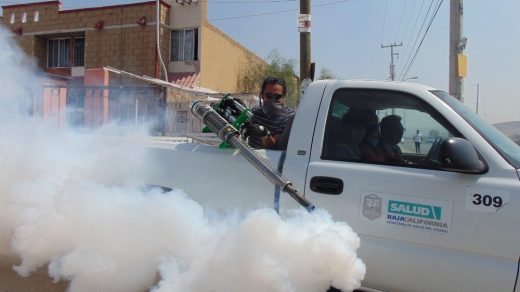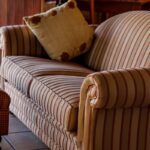Bed bug pest control advice, USA home insects removal, American property clean control method
Tips for Bed Bug Pest Control: How to Protect Your Home and Health
27 October 2024
Bed bugs, once nearly eradicated in many parts of the world, have made a significant comeback in recent years. These tiny, nocturnal pests feed on human blood, leaving behind itchy welts and causing a great deal of discomfort. Because they can hide in the smallest of crevices and are notoriously difficult to eliminate, bed bug infestations can be a nightmare for homeowners and tenants alike.
Effective bed bug control requires more than just a simple cleaning. These pests are resilient and can reproduce rapidly, so a well-planned, multi-step approach is essential to get rid of them completely. In this blog, we’ll provide practical tips for bed bug pest control, identify, and eliminate bed bugs, ensuring that your home remains pest-free.
Identifying Bed Bugs
The first step in any bed bug pest control plan is to know how to identify these pests. Adult bed bugs are small, flat, oval-shaped insects about the size of an apple seed. They are reddish-brown in color, especially after feeding. Despite their tiny size, they are visible to the naked eye, but they are often difficult to spot because they hide in dark, concealed areas during the day.
Common signs of a bed bug infestation include:
Bites: Bed bugs feed on human blood, leaving small, red welts or itchy bites, often in a row or cluster.
Blood Stains: You may notice small bloodstains on your sheets, pillows, or mattress from crushed bed bugs.
Dark Spots: Bed bug excrement can appear as small black or brown spots on bedding, mattresses, or walls.
Shed Skins: As bed bugs grow, they shed their exoskeletons, which can accumulate around their hiding spots.
Once you’ve identified bed bugs, it’s time to take immediate action.
Declutter and Clean Your Home Thoroughly
Bed bugs thrive in cluttered environments because they can hide easily. One of the simplest yet most effective steps to take in pest control is decluttering your living spaces. Start by organizing your belongings and discarding items that you no longer need. Remove clutter from bedrooms and other areas where bed bugs may be hiding.
After decluttering, deep cleaning is essential. Vacuum your floors, furniture, mattresses, and baseboards thoroughly. Bed bugs can easily hide in cracks and crevices, so pay special attention to tight spaces. Dispose of the vacuum bag or empty the vacuum canister immediately into a sealed plastic bag and take it outside.
Isolate and Treat Bedding and Fabrics
Bed bugs often make their homes in bedding, clothing, and upholstered furniture. To prevent the infestation from spreading, isolate and treat these items as soon as possible.
Wash Bedding and Clothing: Strip your bed of all linens, including sheets, pillowcases, and blankets, and wash them in hot water. Bed bugs cannot survive high temperatures, so set your washing machine to the highest setting. After washing, dry them on the highest heat setting for at least 30 minutes.
Use Bed Bug-Proof Covers: Purchase bed bug-proof mattress and pillow encasements, which are designed to trap any remaining bed bugs inside, preventing them from escaping or biting you. These covers also make it easier to spot new infestations.
Treat Furniture: For upholstered furniture, consider using a steamer. The high heat from a steamer can kill bed bugs and their eggs on contact. Be sure to steam all areas of the furniture, including seams, buttons, and hidden crevices.
Use Natural Bed Bug Control Methods
Many homeowners prefer to start with natural methods before resorting to chemical treatments. Several natural bed bug control methods can be effective when used correctly.
Diatomaceous Earth (DE): This is a fine powder made from fossilized algae that can be sprinkled around bed frames, baseboards, and other areas where bed bugs hide. Diatomaceous earth is harmless to humans and pets, but it’s lethal to bed bugs because it dehydrates them by damaging their exoskeletons. Be sure to use food-grade DE and apply it in thin, even layers.
Essential Oils: Some essential oils, like tea tree oil, lavender oil, and eucalyptus oil, are known to repel bed bugs. While they may not completely eradicate an infestation, they can be used as a preventive measure. Mix a few drops of essential oil with water and spray it around your bed, furniture, and any cracks or crevices.
Heat Treatment: As mentioned, bed bugs are highly sensitive to heat. You can also use a portable steam cleaner to treat bedding, mattresses, curtains, and carpets. Be sure to use a steamer that reaches temperatures of at least 120°F (49°C) to ensure that it effectively kills bed bugs.
Final Words
Dealing with bed bugs can be a stressful and time-consuming process, but with the right knowledge and approach, you can effectively control and eliminate these pests. Start by identifying the signs of an infestation, then use a combination of natural remedies, chemical treatments, and professional help if necessary.
By staying vigilant and taking preventive measures, you can keep bed bugs at bay and protect your home and health from future infestations.
Comments on this guide to Bed bug pest control tips article are welcome.
Pest Control
Pest Control Articles
Protecting historical buildings from structural pests
Achieving excellence in pest eradication
Building Articles
Residential Architecture
Comments / photos for the Bed bug pest control guide page welcome.







